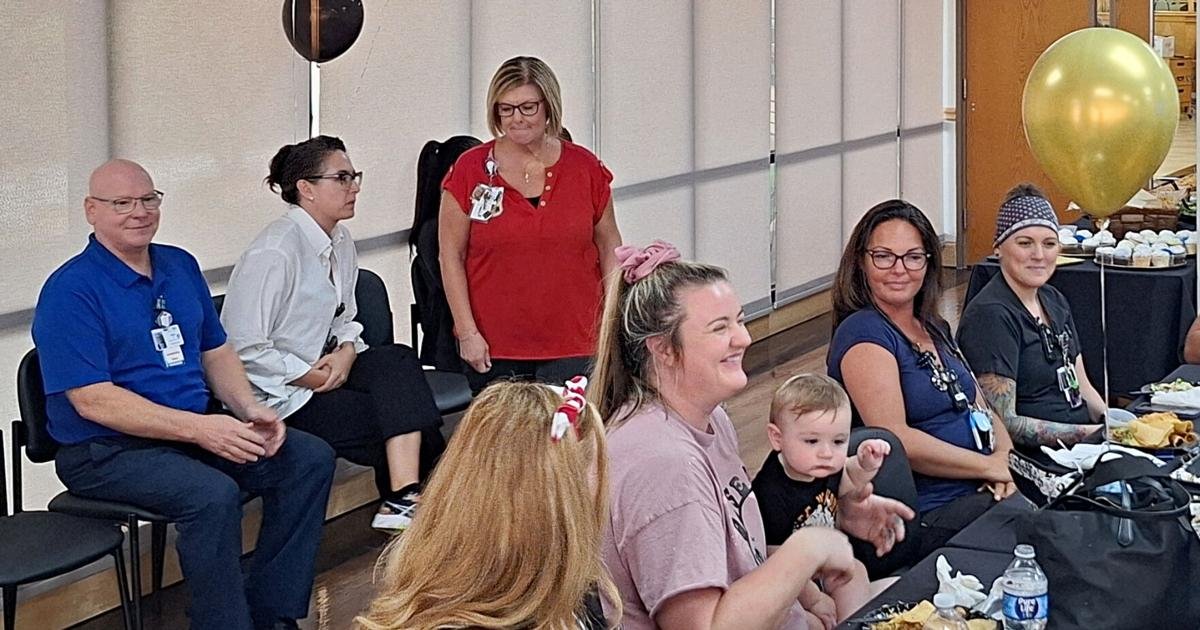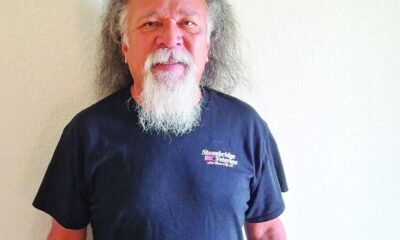Business
Nurses Achieve Professional Milestone Through Havasu Regional Medical Center and TruMont Partnership

Graduates from Havasu Regional Medical Center’s nurse residency program were celebrated Tuesday morning.
HRMC Clinical Nurse Educator Audrey Blankenship highlighted the recognition of participants from both of last year’s cohorts. Havasu’s facility is among 17 state hospitals collaborating with the Arizona State Board of Nursing, she said, crediting grant funding for introducing educational programs that “support the nursing profession.”
The grant facilitated a partnership with standardized learning platform TruMont, aimed at assisting new graduate nurses through their first year. “It’s two cohorts that we’re celebrating today,” Blankenship said. “They’ve actually been working on their own in our facility.”
Graduate nurses navigate a three-phase residency program at HRMC. On Tuesday, participating residents received certificates of completion from the staff. Blankenship explained that those seeking positions in high-acuity areas start in low-acuity ones to build fundamentals and reduce burnout.
In phase one, residents complete online course assignments on topics like medication administration, body systems, and communication, followed by weekly meetings with clinical nurse educators. They also learn facility-specific procedures and policies.
Nurses shadow various specialties such as radiology and respiratory therapy to gain a broader appreciation for these fields. Residents typically commit to two to three shifts weekly in their assigned units, alongside preceptors, over a period of 12 to 16 weeks.
“During phase two, the residents continue building on phase one’s skills, focusing on integrating into the hospital culture, teamwork, and gaining confidence as independent practitioners,” Blankenship explained. Completion of this phase requires residents to meet all competencies, allowing them to care for up to six patients depending on their unit.
The residency program also includes monthly meetings with the education team to discuss growth, progress, and professional goals. Preceptors transition into mentors for the remaining phases.
“Finally, we introduce the residents to precepting by pairing them with nursing students, CNA students, or nurse externs,” Blankenship said. This approach builds confidence and promotes leadership within the facility.
In the final phase, residents are encouraged to seek leadership positions and complete a research-based capstone project, usually on hospital practice improvements or expanding nursing knowledge. The entire residency takes one year, totaling over 2,100 hours of on-the-job training.
HRMC CEO Philip Fitzgerald congratulated the graduates, reminding them of the support within the facility. “Twenty-six years ago when I was in nursing school, I never thought I’d be a CEO and support such a great team,” Fitzgerald said. “I am extremely proud of each and every one of you and can’t wait to see where you’re gonna end up.”


















